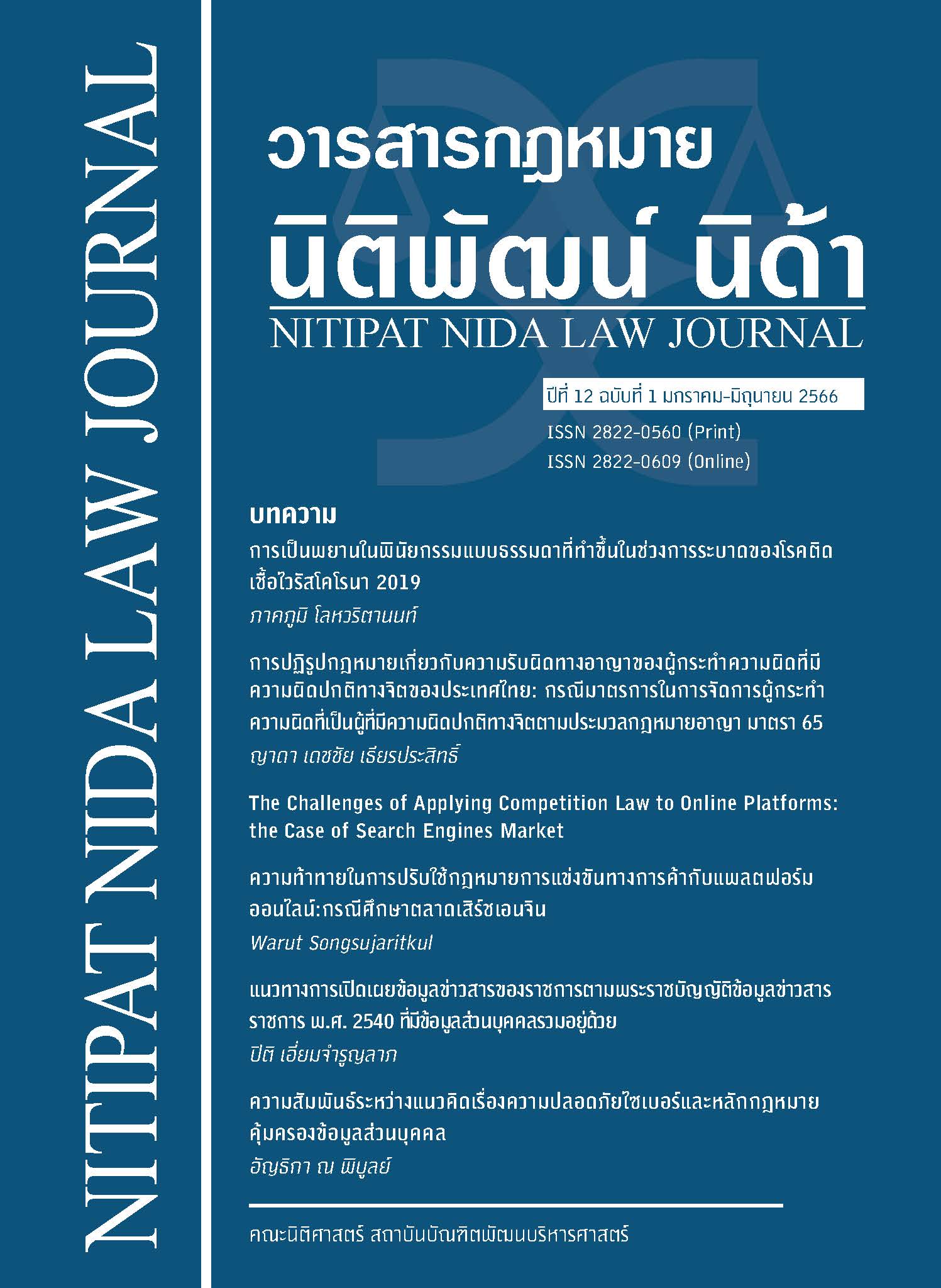The Correlations between the Concept of Cybersecurity and The Personal Data Protection Law
Keywords:
Cybersecurity, Personal Data Protection Law, CorrelationsAbstract
Nowadays, technology plays a crucial role in various aspects of life and business operations for both the public sector, state-owned enterprises, and private sector. This is because the workflow of such technologies often involves processing personal data for providing services. Cybersecurity has therefore gained significant attention from society, as it is a vital factor directly impacting the protection of personal data and the right to privacy of data subjects. The concept of cybersecurity is an important principle reflected in personal data protection law, as it is the responsibility of those who involved in processing personal data to implement appropriate technological and organizational measures in order to ensure security of personal data. However, aligning cybersecurity concepts with personal data protection laws can be challenging. This is because the tools used to enhance cybersecurity may not necessarily be effective in protecting data according to personal data protection law. Therefore, managing the correlations between the concept of cybersecurity and the protection of personal data is crucial for every organization. Striking a balance between the interests of the cybersecurity and the right to privacy of data subjects may be a suitable approach in managing the correlations between these two concepts. By combining the ideas and ensuring a balance, organization should set out a clear policy and implement measures that are suitable for the organization’s context.
References
Bambauer D, ‘Privacy versus Security’ (2013) 103(3) Journal of Criminal Law and Criminology 667.
Brumfield C, and Haugli B, Cybersecurity Risk Management: Mastering the Fundamentals Using the NIST Cybersecurity Framework (1st edn, Wiley 2021).
Hong S-H and Alazab M, ‘Cybercrime and Data Breach: Privacy Protection through the Regulation of Voluntary Notification’ (Prepared for the Korea Layton R and Elaluf-Calderwood S, ‘A Social Economic Analysis of the Impact of GDPR on Security and Privacy Practices’ (12th CMI Conference on Cybersecurity and Privacy, 28-29 November 2019).
Kierkegaard S, ‘Cybercrime Convention: Narrowing the Cultural and Privacy Gap?’ (2007) 1(1) International Journal of Intercultural: Information Management 17.
Kumar R, Sharma S, Vachhani C and Yadav N, ‘What Changed in the Cyber-Security After COVID-19?’ (2022) 120 Computer & Security 1.
Kuner C, Svantesson D, Cate F, Lynskey O and Millard C, ‘The Rise of Cybersecurity and Its Impact on Data Protection’ (2017) 7(2) International Data Privacy Law 73.
Lallie H S, Shepherd L A, Nurse JRC, Erola A, Epiphaniou G, Maple C and Bellekens X, ‘Cyber Security in the Age of COVID-19: A Timeline and Analysis of Cyber-Crime and Cyber-Attacks During the Pandemic’ (2021) 105(1) Computers & Security 1.
Legislation Research Institute (KLRI), Legal Scholar Roundtable, How Law Operates in the Wired Society, Seoul, Korea, 2017).
Lubis M, and Handayani D, ‘The Relationship of Personal Data Protection Towards Internet Addiction : Cyber Crimes, Pornography and Reduced Physical Activity’ (2022) 197 Procedia Computer Science 151.
Lynskey O, The Foundations of EU Data Protection Law (Oxford Studies in European Law) (1st edn, OUP 2016).
Manju Khari, Gulshan Shrivastava, Sana Gupta and Rashmi Gupta, ‘Role of Cyber Security in Today’s Scenario’ in Information Resources Management Associations (ed), Cyber Security and Threads: Concepts, Methodologies, Tools and Applications (1st edn, IGILOBAL: USA 2018).
National Institute of Standards and Technology (NIST), ‘Framework for Improving Critical Infrastructure Cybersecurity’ (12 February 2014, Version 1.0).
Peter Carey, ‘Data Protection Principles’ in Peter Carey (edn), Data Protection : A Practical Guide to UK and EU Law (5 th, OUP 2018).
Porcedda M G, ‘Data Protection and the Prevention of Cybercrime: The EU as an Area OF Security?’ (Working Papers LAW 2012/25, European University Institute, Department of Law, 2012).
Rains T. and Youngblood T., Cybersecurity Threats, Malware Trends, and Strategies: Discover Risk Mitigation Strategies for Modern Threats to your Organization (2nd edn, Packt Publishing 2023).
Ross A., Security Engineering. A Guide to Building Dependable Distributed Systems. (Wiley:Indianapolis 2008).
Sommer P and Brown I, ‘Reducing Systemic Cybersecurity Risks’ (OECD/IFP Project on Future Global Shocks, 2011).
Downloads
Published
How to Cite
Issue
Section
License
Copyright (c) 2023 Nitipat NIDA Law Journal

This work is licensed under a Creative Commons Attribution-NonCommercial-NoDerivatives 4.0 International License.



